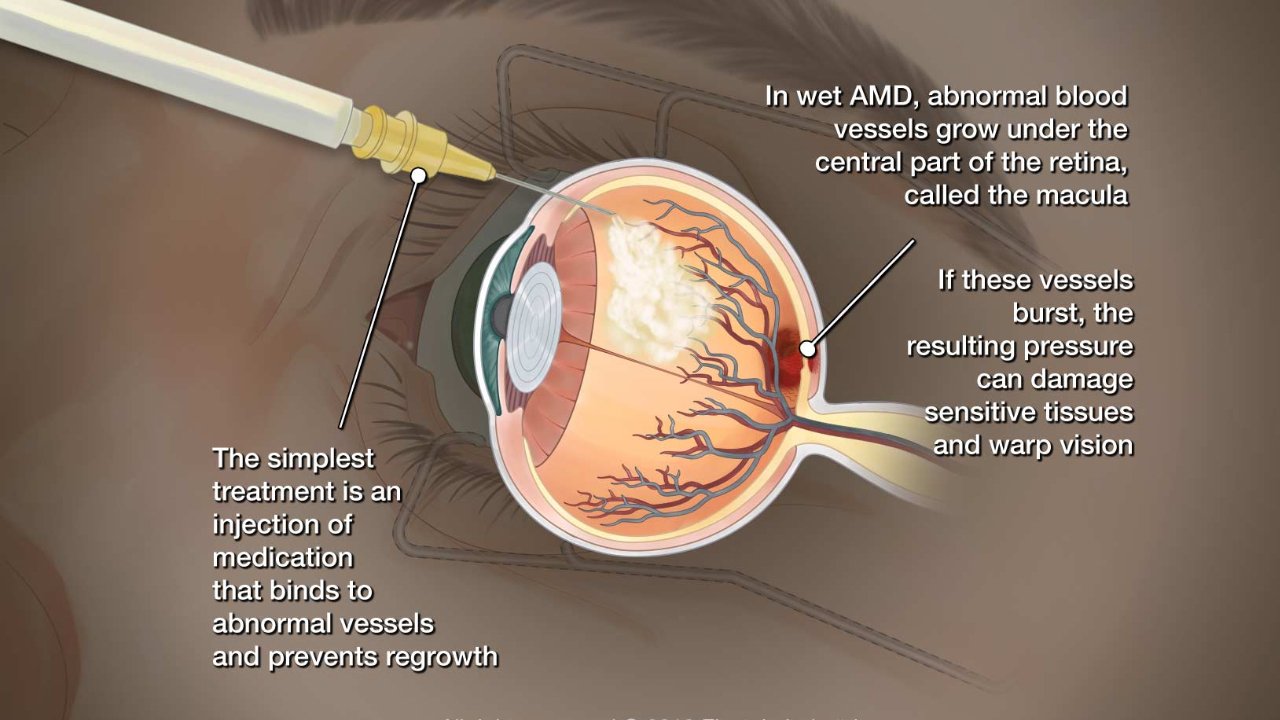Macular Degeneration Surgery

Introduction:
Macular degeneration, also known as age-related macular degeneration (AMD), is a common eye condition that affects millions of people, especially those aged 50 and older. It can lead to significant vision loss and is a leading cause of blindness in the elderly. While there is no cure for AMD, there are various surgical treatments available to help manage the condition and preserve vision.
Types of Macular Degeneration:
There are two main types of AMD: dry AMD and wet AMD.
- Dry AMD: This is the more common form of macular degeneration, accounting for about 90% of cases. It occurs when the light-sensitive cells in the macula, called photoreceptors, break down over time. Dry AMD typically progresses slowly and may result in mild to moderate vision loss.
Wet AMD: Wet AMD is less common but more aggressive. It happens when abnormal blood vessels grow beneath the macula and leak fluid or blood. This can cause sudden and severe vision loss if left untreated.
Conditions that May Require Surgery:
While surgery is not typically the first line of treatment for AMD, it may be considered in specific situations:
- Wet AMD:If you have wet AMD, your ophthalmologist may recommend surgical treatments like anti-VEGF injections, laser therapy, or photodynamic therapy to slow down the growth of abnormal blood vessels and reduce leakage.
- Advanced Dry AMD: In some cases of advanced dry AMD with significant vision loss, surgical options such as implantable telescopic lenses may be considered. These devices can help improve central vision in select patients.
Surgical Treatments for AMD:
- Anti-VEGF Injections: This is the most common surgical treatment for wet AMD. Anti-VEGF drugs are injected into the eye to inhibit the growth of abnormal blood vessels and reduce fluid leakage. Multiple injections may be needed over time.
- Laser Therapy: Laser therapy can be used to seal leaking blood vessels in wet AMD. It’s called photocoagulation and is typically used when the leaking vessels are not located directly under the fovea, as treatment directly under the fovea can cause further vision loss.
- Photodynamic Therapy (PDT): PDT involves injecting a light-sensitive drug into the bloodstream, which is then activated by laser light. This therapy targets and destroys abnormal blood vessels in wet AMD.
- Implantable Telescopic Lenses: In advanced dry AMD with severe vision loss, telescopic lenses can be implanted into the eye to magnify and improve central vision. However, this option is suitable for only a select group of patients.
Conclusion:
Macular degeneration surgery plays a crucial role in managing both dry and wet AMD, depending on the type and severity of the condition. Early detection and timely intervention are essential for better outcomes. If you or a loved one is experiencing vision changes or has been diagnosed with AMD, consult with an ophthalmologist to discuss the most appropriate treatment options, which may include surgery, to help preserve your vision and quality of life.
Contact Us
Get In Touch
Address
F 146/9 second floor shaheen bagh jamia Nagar New Delhi 110025
Phone
+91-9716952857
cure2world@gmail.com

